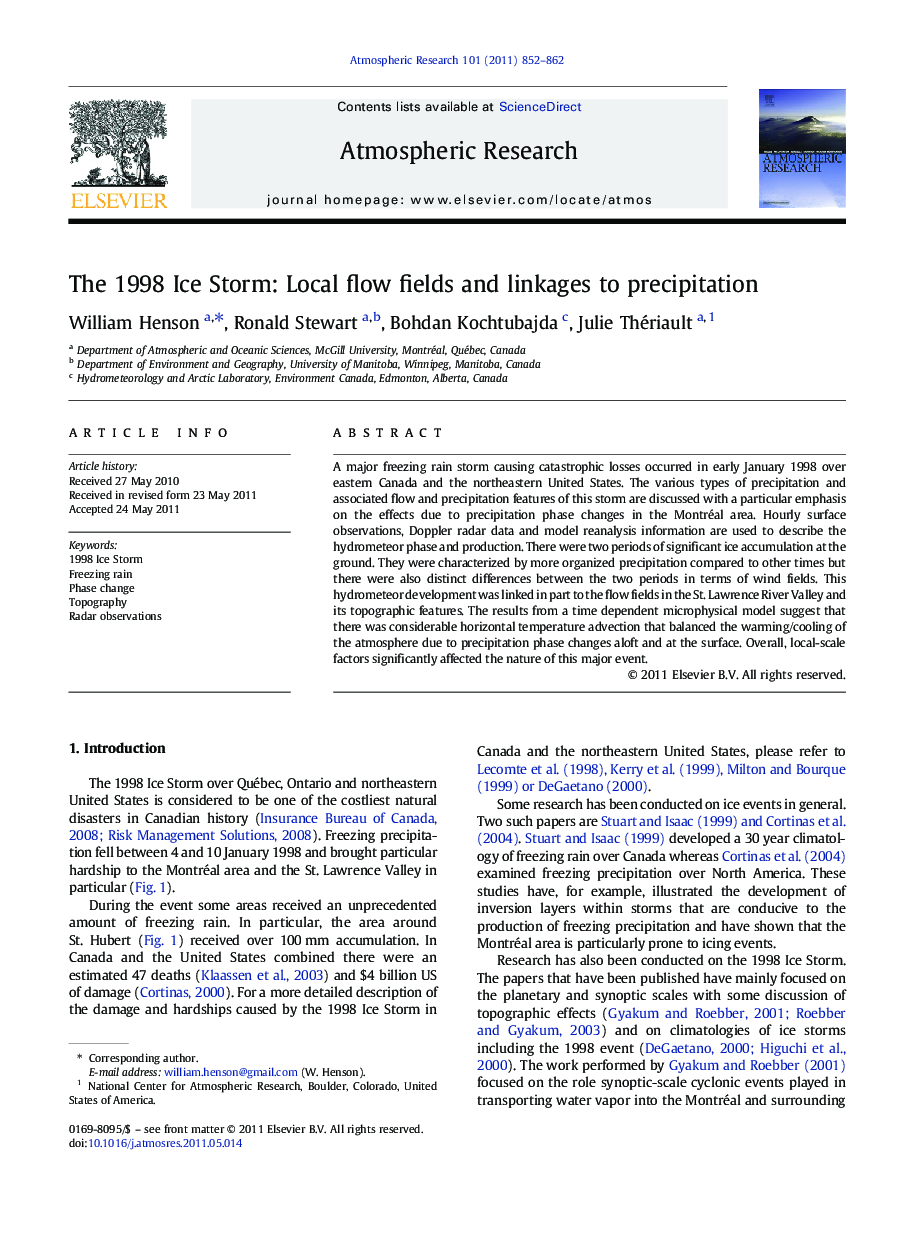| Article ID | Journal | Published Year | Pages | File Type |
|---|---|---|---|---|
| 4450362 | Atmospheric Research | 2011 | 11 Pages |
A major freezing rain storm causing catastrophic losses occurred in early January 1998 over eastern Canada and the northeastern United States. The various types of precipitation and associated flow and precipitation features of this storm are discussed with a particular emphasis on the effects due to precipitation phase changes in the Montréal area. Hourly surface observations, Doppler radar data and model reanalysis information are used to describe the hydrometeor phase and production. There were two periods of significant ice accumulation at the ground. They were characterized by more organized precipitation compared to other times but there were also distinct differences between the two periods in terms of wind fields. This hydrometeor development was linked in part to the flow fields in the St. Lawrence River Valley and its topographic features. The results from a time dependent microphysical model suggest that there was considerable horizontal temperature advection that balanced the warming/cooling of the atmosphere due to precipitation phase changes aloft and at the surface. Overall, local-scale factors significantly affected the nature of this major event.
Research highlights► In this study we examine the local flow fields during the 1998 Ice Storm. ► There were two periods of significant freezing accumulation. ► There were also differences between the two periods in terms of wind fields. ► Hydrometeor development was linked to the flow fields and the topography. ► Temperature advection was somewhat balanced the warming/cooling due to precipitation phase changes aloft.
